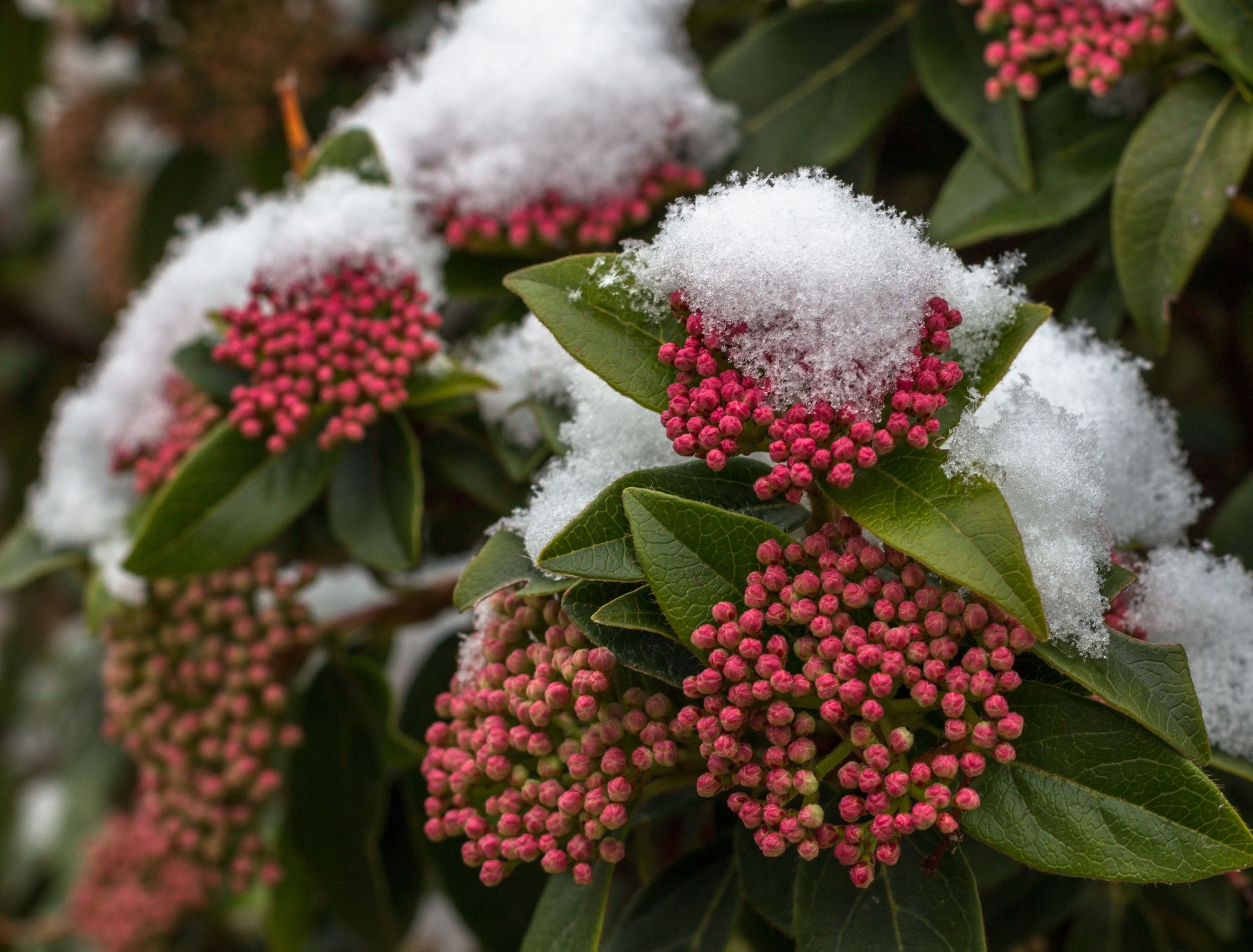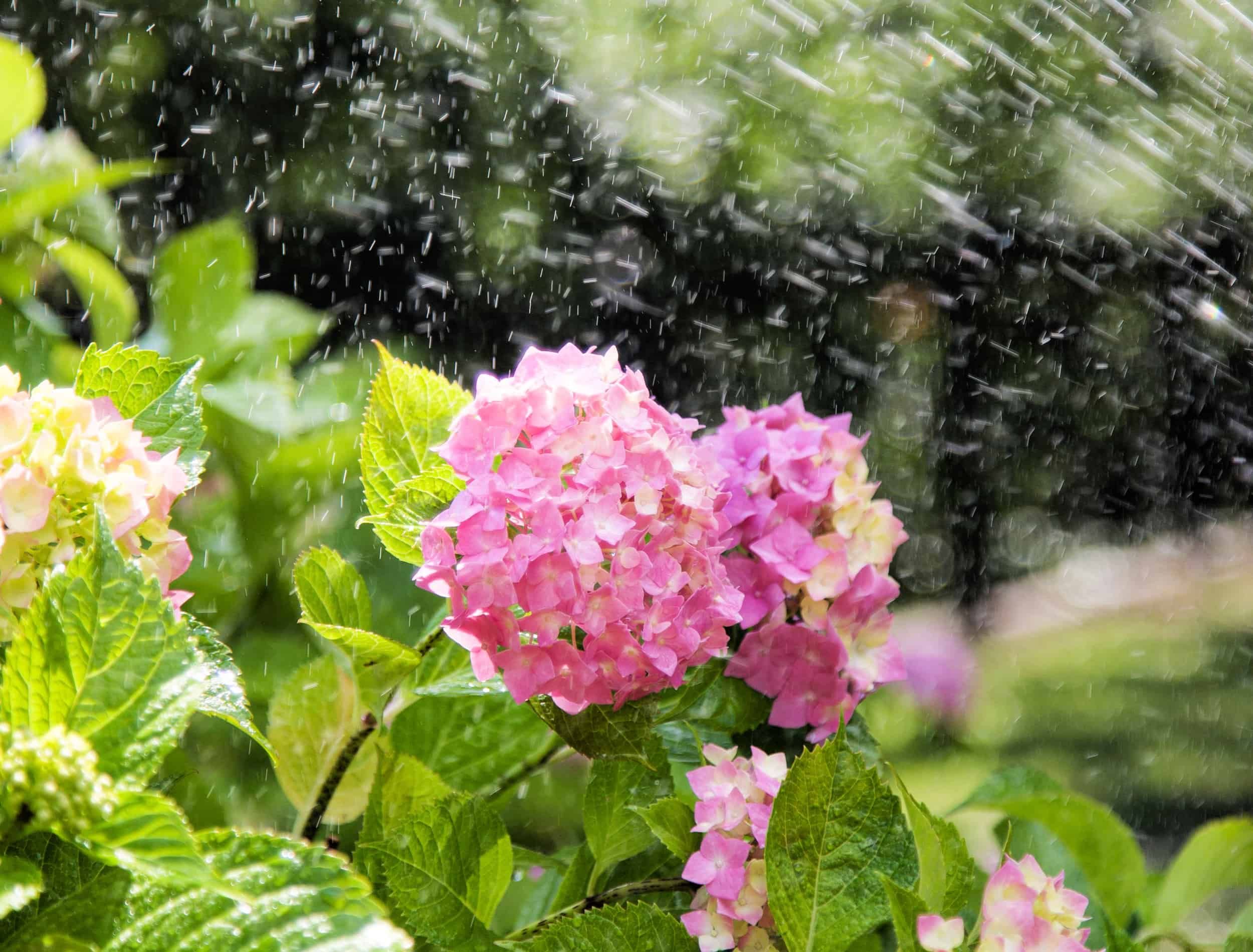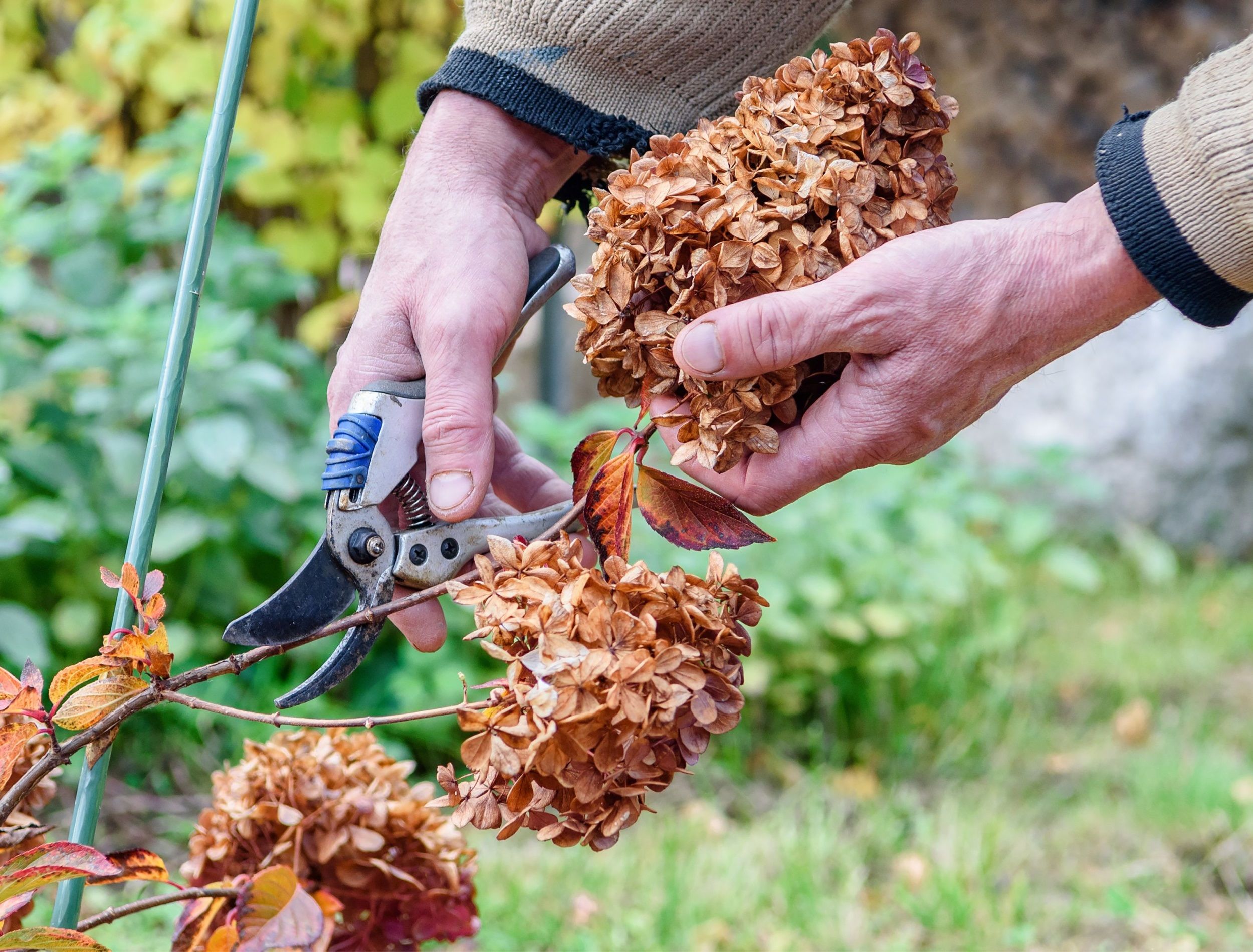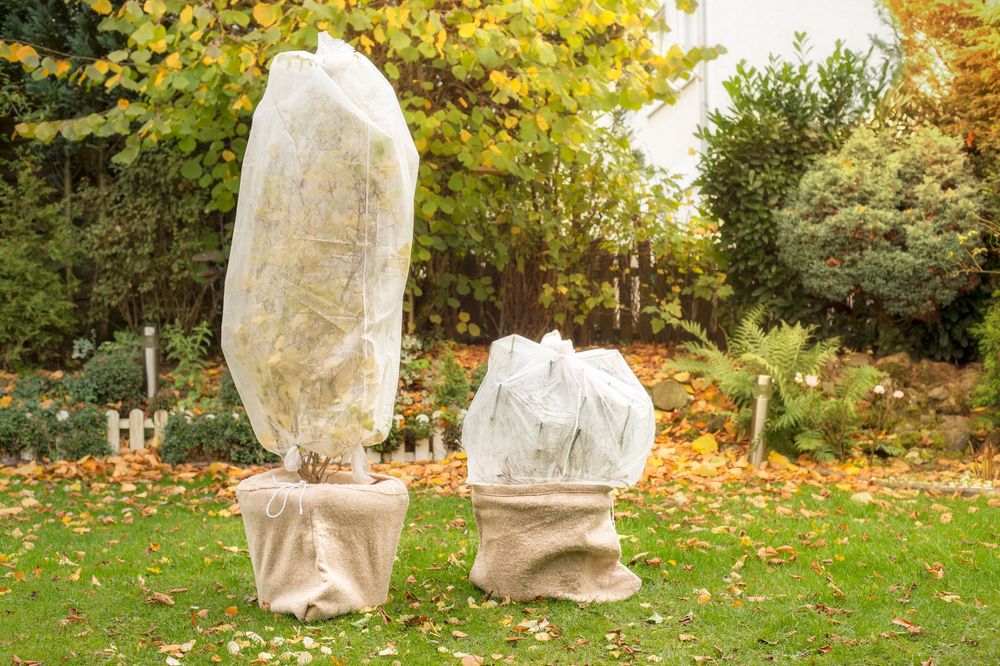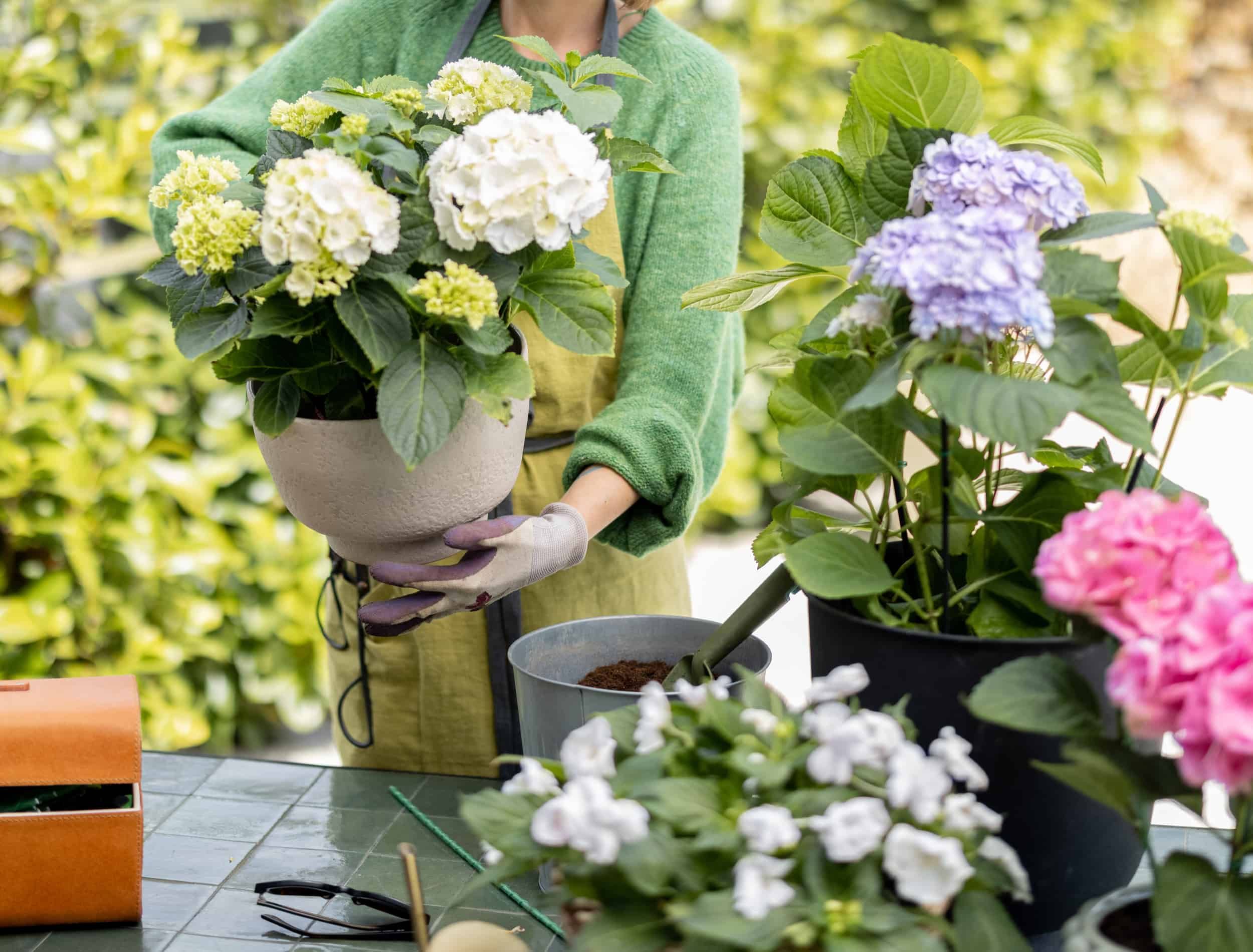Cold weather tends to affect a hydrangea plant's ability to bloom, so proper winter protection is crucial. While severe winter weather can do a number on your precious plants, there are plenty of measures you can implement to protect them.
With the proper time, tools, and attention, preventing cold injury is incredibly easy! Below, you'll find the step-by-step guide to preparing your hydrangeas for the cold weather.
Tools You'll Need
Image credits: Tasha-photo via Shutterstock
Preparing your hydrangeas for winter only requires a few common tools! Find the essentials listed below.
- Watering hose or can
- Gardening gloves
- Mulch
- Protective tree wrap or burlap
- Bungee cord
- Large plastic pot
- Wooden stakes
- Rubber mallet
- Fall leaves
- Rocks or bricks
Why Is Winter Care Important?
Image credits: Dobra Kobra via Shutterstock
The need to protect your hydrangeas over winter depends on the variety you have in your garden. Different cultivars produce blooms at different times of year and some hydrangea plants are more cold-hardy.
Perennial bigleaf hydrangeas flower on old growth, meaning the previous year's growth is where flowers develop. Freezing temperatures will quickly kill new growth and cold injury can mean you won't seem blooms the next year. This variable is why it's crucial to protect your plants.
Other hydrangeas bloom on new growth, but a late-season frost can have similarly detrimental effects. It's essential to check expected frost dates in your area and prepare as necessary.
If you experience a mild winter, it may not be necessary to protect your plants. But temperatures below freezing and harsh frosts can have a detrimental impact on your plants. Also, intense winds can dry out plant tissue and displace it in your garden and alternating freezing and thawing cycles can expose the roots to the elements.
Protecting Hydrangeas From Cold Injury
Step 1: Watering, Pruning, and Fertilizing
Image credits: Tequiero via Shutterstock
Watering your plants before the first freeze is essential. This will ensure that the leaves, stems, and roots are hydrated. Also, moist soil absorbs sunlight, maintaining warmth during the night. The water will trap heat as it freezes, insulating the root system.
The freezing temperatures may also dehydrate the plant by pulling water from the leaves and creating ice crystals, but this is less damaging if the plants are already hydrated.
Generally, hydrangea varieties require pruning in spring, summer, or late winter, and fertilizing is best done in spring or early fall. Although, it's best to avoid these tasks when prepping for freezing weather because they encourage new growth. The fresh buds are vulnerable to cool temperature, so it's best to wait until you do not expect a frost.
Step 2: Apply Mulch
Image credits: ronstik via Canva
Along with watering, you should apply a 2 to 4 inch layer of organic mulch around the base of the plant as a form of insulation. While bare soil better absorbs heat, mulch is the best way to keep heat in. You can use compost, straw, wood chips, and even newspaper.
Pro Tip: Before you lay the mulch, clear the area of weeds and dead leaves. This will prevent pests and disease, while also getting regular fall chores out of the way.
Step 3: Apply a Covering
Image credits: Tanja Esser via Shutterstock
To cover your hydrangeas, you'll need four stakes that are about 18 inches taller than the plant's height. Pound them into the ground around the plant using a mallet, ensuring they are about 12 inches deep and 6 inches above the plant. Also, place the stakes about 6 inches away from the sides of the plant. Make sure the sheet doesn't touch the foliage to reduce the risk of cold damage.
Drape a cloth or large piece of burlap fabric over the stakes to trap in the heat. Add leaves underneath the fabric and around the plant as insulation. Then, place rocks or bricks around the fabric to hold it in place, ensuring there are no open spaces that will let cool air in.
As an alternative, you can place a large plastic pot over the hydrangea. Again, fill in empty space with leaves for insulation. Wrap the pot in burlap and set rocks on top of the pot and around the edges of the fabric. You can also use a bungee cord around either structure for extra security.
Pro Tip: Remove the cover if temperatures are above 50 degrees Fahrenheit during the day. This will give the plant and ground a chance to warm up. Reapply the cover at night when temperatures drop.
Step 4: Bring Potted Hydrangeas Indoors
Image credits: RossHelen via Shutterstock
While you should keep your potted hydrangeas outdoors as long as possible in the fall, you should bring it indoors before temperatures reach freezing. You can wrap them to protect them, but bringing them indoors is simpler. The plants will go dormant, but you should still water them around once a month.
Pro Tip: Allow the plant to maintain its leaves until November and then pick them off by hand. Alternatively, you can place the plant in complete darkness and allow leaves to fall off naturally.
Protect Your Plants!
Protecting your hydrangeas from cold injury is part of general winter gardening prep. Keep the plants well-watered and use a layer of mulch to prevent frost damage. Avoid pruning and fertilizing since they encourage new growth, and apply a protective fabric or bring the plants indoors.
Do you have any tips for protecting hydrangeas from cold damage? Share in the comments below!

